Narcissism is a personality trait that has long fascinated psychologists, writers, and readers alike. It’s a term that’s often thrown around in casual conversation, but understanding the complexities and impact of narcissism requires a deeper dive. Luckily, fiction provides a powerful lens through which we can explore the world of narcissistic personalities. In this blog post, we’ve compiled a list of 15 powerful novels about narcissism and narcissists that offer a compelling look at narcissism and the impact it can have on individuals, relationships, and society as a whole.
From classics like “The Great Gatsby” to modern masterpieces like “Gone Girl,” these fictional classical books about narcissism will keep you hooked from start to finish, offering an insightful and thought-provoking exploration of this complex trait. So sit back, grab a cup of coffee, and get ready to dive into the twisted and intriguing world of narcissism in literature.
1. “The Great Gatsby” by F. Scott Fitzgerald
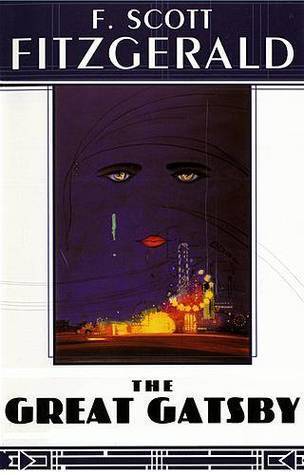
“The Great Gatsby” by F. Scott Fitzgerald is a novel that explores the themes of wealth, social status, and the American Dream. At its core, the novel is a story of love and obsession, but it is also a commentary on the shallow and materialistic culture of the 1920s.
The main character, Jay Gatsby, is a wealthy and mysterious man who is obsessed with his former love, Daisy Buchanan. Gatsby is often seen as a classic example of a narcissist. He is consumed with his own image and reputation and will do whatever it takes to maintain his position in society. He throws lavish parties in an attempt to impress Daisy and win her back, but ultimately his efforts are in vain.
Throughout the novel, Gatsby’s obsession with Daisy becomes more and more apparent, and his true motives are called into question. He is willing to lie and manipulate in order to achieve his goals, and he shows little regard for the feelings or well-being of others.
In many ways, Gatsby represents the darker side of the American Dream — a man who is so consumed with the pursuit of wealth and status that he loses sight of what is truly important in life.
2. “American Psycho” by Bret Easton Ellis

“American Psycho” by Bret Easton Ellis is a novel that explores the themes of materialism, consumerism, and the emptiness of modern life. At its core, the novel is a disturbing portrait of a young, wealthy and successful investment banker named Patrick Bateman, who is a classic example of a narcissist.
Patrick Bateman is a deeply troubled and disturbed character who is obsessed with his own image and status. He is consumed with his own beauty, wealth, and reputation, and is willing to go to extreme lengths to maintain them. Bateman’s narcissism is exemplified by his obsession with his physical appearance and his obsessive grooming habits.
As the novel progresses, Bateman becomes increasingly violent and sadistic, showing a complete lack of empathy for others. He is obsessed with power and control, and derives pleasure from inflicting pain and suffering on those around him. Bateman’s violent and erratic behavior is a manifestation of his narcissistic personality disorder, which drives him to seek out and destroy anyone who threatens his sense of self-importance.
The novel is a chilling critique of the shallow and superficial culture of the 1980s, and the dangers of unchecked narcissism and materialism. It portrays a society that is obsessed with wealth, status, and appearance, and the devastating consequences that can result from such an empty and hollow way of life.
3. “Gone Girl” by Gillian Flynn

“Gone Girl” by Gillian Flynn is a novel that explores the themes of identity, manipulation, and the toxic nature of relationships. The novel follows the disappearance of Amy Dunne, and the subsequent investigation into her husband, Nick Dunne, who becomes the prime suspect in her disappearance.
Throughout the novel, Amy Dunne is portrayed as a master manipulator who is consumed with her own desires and needs. She is focused on her own image and reputation, and will do whatever it takes to maintain them. Her narcissistic personality disorder is evident in her willingness to create an elaborate plan to frame her husband for her own disappearance.
Nick Dunne, on the other hand, is portrayed as a man who is deeply flawed and self-absorbed. He is consumed with his own image and reputation, and is willing to manipulate and deceive in order to maintain them. His narcissistic tendencies are evident in his inability to empathize with others, and his tendency to put his own needs ahead of those of others.
The novel is a commentary on the toxic nature of relationships, and the dangers of unchecked narcissism. It portrays a society that is obsessed with image and reputation, and the devastating consequences that can result from such a superficial and shallow way of life. In many ways, the novel serves as a cautionary tale about the dangers of narcissism, and the importance of empathy, compassion, and understanding in relationships.
4. “The Picture of Dorian Gray” by Oscar Wilde
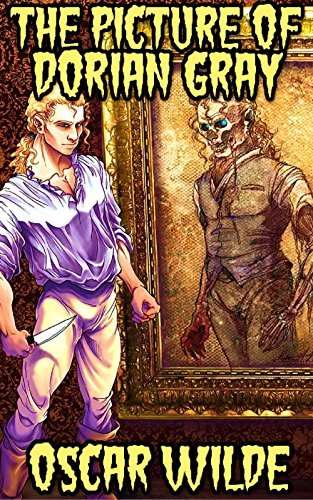
“The Picture of Dorian Gray” by Oscar Wilde is a novel that explores the themes of beauty, vanity, and the corrupting influence of narcissism. At its core, the novel is a cautionary tale about the dangers of unchecked narcissism and the pursuit of beauty and pleasure at any cost.
The main character, Dorian Gray, is a young man who is consumed with his own beauty and youth. He becomes obsessed with a portrait of himself, which he believes captures his true essence and beauty. As the novel progresses, Dorian becomes increasingly narcissistic, shallow, and selfish, willing to do whatever it takes to preserve his youth and beauty.
Dorian’s obsession with his own image and reputation leads him down a dark and dangerous path, as he becomes involved in a series of scandalous and immoral activities. His narcissism blinds him to the consequences of his actions, and he becomes increasingly isolated and alone.
Throughout the novel, Wilde portrays narcissism as a destructive force that can lead to moral decay and spiritual emptiness. He highlights the dangers of pursuing beauty and pleasure at the expense of morality and compassion, and the importance of recognizing the value of human life and relationships.
In many ways, “The Picture of Dorian Gray” serves as a warning about the dangers of narcissism and the pursuit of beauty at any cost.
5. “Less Than Zero” by Bret Easton Ellis
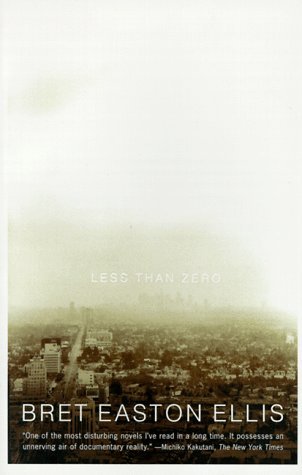
“Less Than Zero” by Bret Easton Ellis is a novel that delves into the themes of narcissism and the emptiness of modern life. The novel follows the life of a wealthy college student, Clay, who returns to Los Angeles for Christmas break and is surrounded by a group of self-absorbed, jaded friends.
The characters in the novel are deeply consumed with their own image and reputation, and are willing to engage in destructive and self-destructive behavior to maintain them. They are obsessed with material possessions, status, and power, but find that these things are ultimately empty and meaningless.
Ellis portrays the characters in the novel as narcissistic and emotionally detached, struggling to find meaning and purpose in their lives. Their narcissistic behavior is a result of the toxic and shallow society they live in, which values image and reputation over genuine human connections.
In many ways, “Less Than Zero” is a commentary on the destructive effects of narcissism and the pursuit of material wealth and status. The novel highlights the importance of empathy and human connection, and the need for genuine human relationships in a world that can be superficial and isolating.
6. “The Talented Mr. Ripley” by Patricia Highsmith
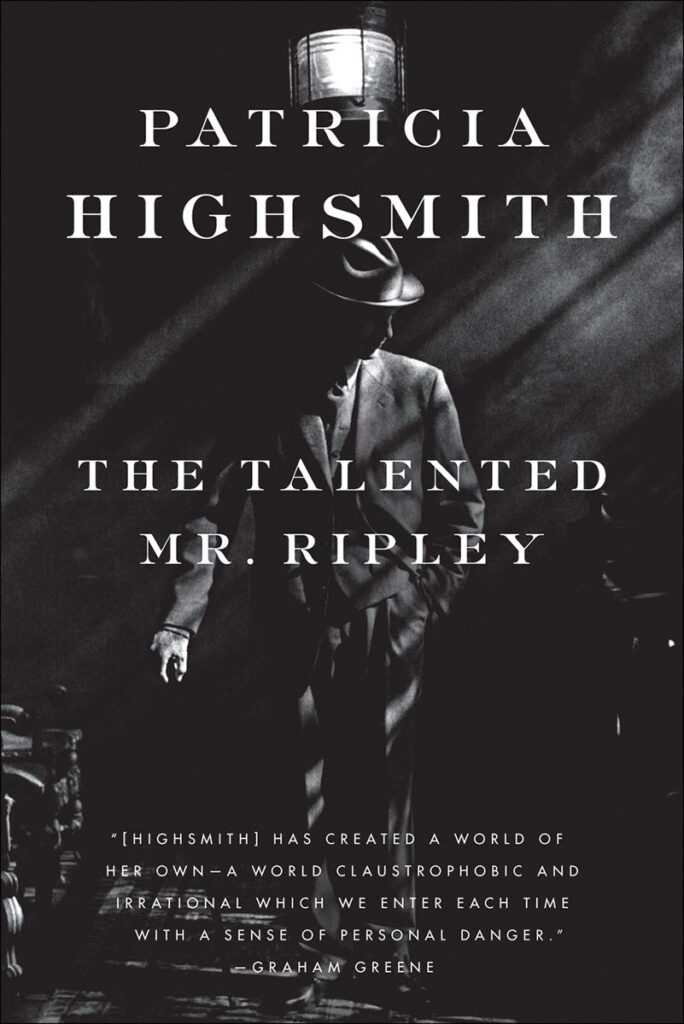
“The Talented Mr. Ripley” by Patricia Highsmith is a novel that explores the themes of narcissism, envy, and identity. The novel follows the life of Tom Ripley, a young man who becomes obsessed with a wealthy acquaintance named Dickie Greenleaf and eventually assumes his identity.
Tom is portrayed as a deeply narcissistic and manipulative character, who is consumed with envy and desires the wealth and status that Dickie possesses. He is willing to engage in immoral and criminal behavior to achieve his goals, including lying, stealing, and murder.
Throughout the novel, Highsmith portrays Tom’s narcissistic behavior as a destructive force that ultimately leads to his downfall. His obsession with Dickie and his desire for wealth and status blinds him to the consequences of his actions, and he becomes increasingly isolated and alone.
In many ways, “The Talented Mr. Ripley” serves as a warning about the dangers of unchecked narcissism and the pursuit of wealth and status at any cost. The novel highlights the importance of recognizing the value of human relationships and the danger of obsessing over material possessions and external validation.
7. “The Devil Wears Prada” by Lauren Weisberger

“The Devil Wears Prada” by Lauren Weisberger is a novel that can be understood in the context of narcissism and narcissists. The book follows the story of Andrea Sachs, a recent college graduate who lands a job as the assistant to Miranda Priestly, the demanding and highly narcissistic editor-in-chief of a fashion magazine.
Miranda Priestly is a classic example of a narcissist. She is self-centered, entitled, and uses her position of power to control and manipulate those around her. She expects absolute loyalty and dedication from her employees and is quick to lash out at anyone who fails to meet her high standards.
Andrea, on the other hand, is initially eager to please Miranda and is willing to put up with her demands and demeaning behavior. However, as the story progresses, Andrea begins to realize the toll that her job is taking on her personal life and her sense of self-worth. She also begins to see Miranda’s behavior for what it is: a manifestation of her deep-seated insecurity and need for control.
Through Andrea’s experiences, the novel exposes the destructive nature of narcissism and the toll it can take on both the narcissist and those around them. It also highlights the importance of setting boundaries and standing up for oneself, even in the face of a powerful and demanding narcissist.
8. “The Bonfire of the Vanities” by Tom Wolfe
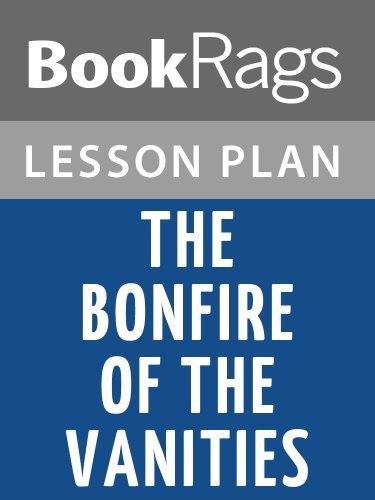
“The Bonfire of the Vanities” by Tom Wolfe is a novel that explores the culture of excess and narcissism in the 1980s, particularly in New York City. The story revolves around Sherman McCoy, a wealthy Wall Street bond trader who becomes involved in a hit-and-run accident in the Bronx. The incident sets off a chain of events that exposes the corruption and greed of various characters in New York’s elite social circles.
One of the central themes of the novel is narcissism. Many of the characters, including Sherman McCoy, exhibit traits of narcissistic personality disorder. They are obsessed with their own success, status, and appearance, and they view others primarily as a means to advance their own interests.
Sherman McCoy, for example, is consumed by his desire for wealth and status. He is a self-centered and shallow person who is more concerned with maintaining his image than with the consequences of his actions. When he becomes involved in the hit-and-run accident, he is primarily worried about the effect it will have on his reputation and his standing in the financial community.
Other characters in the novel, such as the journalist Peter Fallow and the lawyer Larry Kramer, are also shown to be narcissistic in their own ways. Fallow is more concerned with his own fame and fortune than with telling the truth, and Kramer is more concerned with winning his case than with pursuing justice.
Through its portrayal of these characters and their behavior, “The Bonfire of the Vanities” highlights the destructive nature of narcissism and the ways in which it can corrupt individuals and society as a whole. The novel suggests that the pursuit of wealth and status at any cost can lead to a culture of selfishness and greed, where individuals are valued only for what they can offer in terms of power or influence.
9. “White Oleander” by Janet Fitch
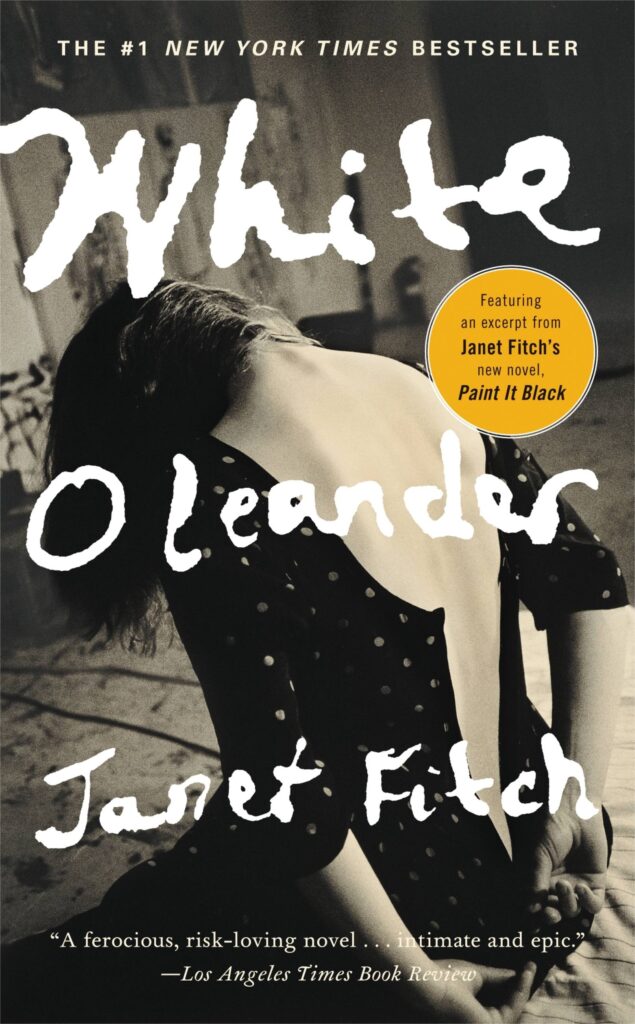
“White Oleander” by Janet Fitch is a novel that explores the theme of narcissism and its impact on the lives of those around the narcissist. The story follows a young girl named Astrid, whose mother Ingrid is a narcissist. Ingrid is a charismatic and manipulative woman who uses her beauty and charm to control those around her, including her daughter.
Throughout the novel, we see how Ingrid’s narcissism affects Astrid’s life. Ingrid is emotionally abusive towards Astrid, using her as a pawn in her own game of power and control. She also has a string of failed relationships and is unable to form lasting connections with others due to her self-centeredness.
As Astrid grows up, she begins to realize the toxic nature of her mother’s behavior and struggles to break free from her influence. She also learns to recognize the narcissistic traits in herself and others, ultimately seeking a healthier sense of self.
10. “The Catcher in the Rye” by J.D. Salinger
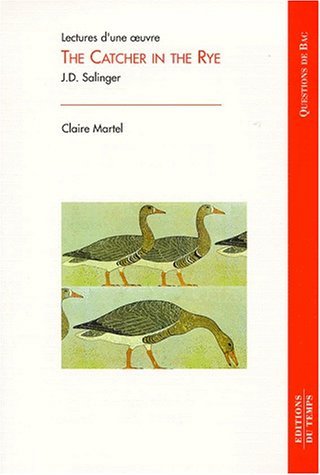
“The Catcher in the Rye” by J.D. Salinger is a classic novel that explores the theme of narcissism and narcissistic abuse through the perspective of its protagonist, Holden Caulfield.
Holden Caulfield is a troubled and confused teenager who has been expelled from his prep school and is struggling to find his place in the world. Throughout the novel, Holden exhibits many narcissistic tendencies, including his grandiose sense of self-importance, his lack of empathy for others, and his belief that he is above the rules and conventions of society.
Holden’s narcissism also leads him to engage in abusive behavior towards others, particularly women. He objectifies them and fails to recognize their agency, viewing them only as objects for his own sexual pleasure.
Furthermore, Holden’s behavior towards his family and friends is also indicative of narcissistic abuse. He manipulates and gaslights those around him, making them feel responsible for his problems and emotions.
As the novel progresses, it becomes clear that Holden’s narcissism and abusive behavior stem from his own deep-seated emotional pain and trauma. His experiences with death and loss have left him feeling isolated and disconnected from the world around him, and his narcissistic tendencies serve as a defense mechanism to protect himself from further emotional harm.
Overall, “The Catcher in the Rye” offers a poignant and insightful exploration of the damaging effects of narcissism and narcissistic abuse, and the importance of recognizing and addressing one’s own emotional wounds in order to heal and move forward.
11. “The Sun Also Rises” by Ernest Hemingway
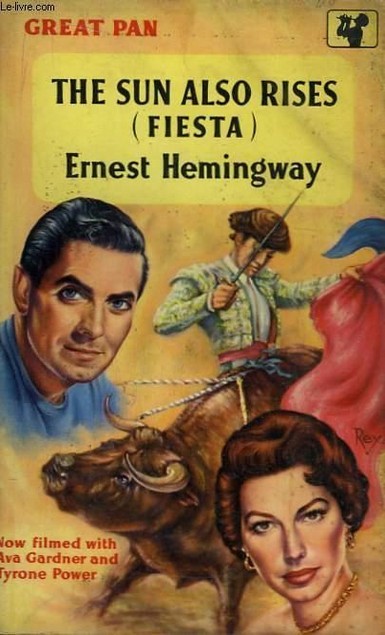
“The Sun Also Rises” by Ernest Hemingway is a novel that explores the theme of narcissism through the portrayal of its characters. The novel follows a group of expatriates living in Paris and traveling to Pamplona, Spain, to watch the bullfights and engage in other leisure activities.
The protagonist of the novel, Jake Barnes, is a veteran of World War I who has suffered a physical injury that has left him impotent. This physical disability has left him feeling inadequate and has led him to develop a sense of emotional detachment from the world around him. Despite this detachment, he is still capable of forming intimate relationships with others, including the novel’s female lead, Lady Brett Ashley.
Brett Ashley, on the other hand, is a classic example of a narcissistic character. She is beautiful and charming but also selfish and manipulative. She enjoys attention from men and often uses her sexuality to get what she wants. She is also emotionally unstable and has a history of failed relationships.
The other characters in the novel also display narcissistic tendencies. For example, Robert Cohn, a writer and Brett’s former lover, is constantly seeking validation and acceptance from others. He is also physically violent and prone to fits of rage.
Throughout the novel, Hemingway portrays these characters as being trapped in their own self-absorption. They are unable to form meaningful connections with others because they are too focused on themselves and their own desires. This theme is reinforced by the novel’s setting, which is characterized by excess and indulgence.
In conclusion, “The Sun Also Rises” is a novel that explores the theme of narcissism through the portrayal of its characters. Hemingway presents a cast of characters who are trapped in their own self-absorption, unable to form meaningful connections with others because they are too focused on themselves and their own desires. The novel is a powerful critique of a society that values self-indulgence and excess over genuine human connection.
12.“The Bell Jar” by Sylvia Plath

“The Bell Jar” is a semi-autobiographical novel by Sylvia Plath, which delves into the life of Esther Greenwood, a young woman who is struggling with her mental health in the 1950s. The novel explores the theme of narcissism through the character of Esther, who experiences a deep sense of alienation and detachment from the world around her.
Esther is a gifted writer who is expected to have a bright future, but she feels increasingly disconnected from her own life and experiences. She finds herself unable to relate to the people around her and feels as if she is trapped inside a bell jar, cut off from the rest of the world. This sense of detachment and isolation is a common characteristic of narcissistic individuals who struggle to connect with others on an emotional level.
Throughout the novel, Esther is preoccupied with her own self-image and struggles to find her place in the world. She is unable to see beyond her own needs and desires and becomes increasingly self-absorbed. This is another common trait of narcissism, where individuals become fixated on their own importance and needs, often to the detriment of others.
At one point in the novel, Esther even compares herself to a fig tree, which represents her desire to have everything in life but her inability to choose one path. This is reflective of the narcissistic trait of grandiosity, where individuals feel entitled to have everything they want without making difficult choices or compromises.
Overall, “The Bell Jar” explores the theme of narcissism through the character of Esther Greenwood, who struggles with her own sense of identity and self-worth. The novel provides a compelling insight into the mind of a narcissistic individual and the impact that this can have on their mental health and relationships with others.
13. The Secret History” by Donna Tartt

The Secret History” by Donna Tartt is a novel that explores the themes of narcissism and the psychology of the narcissist. The story is set at a small, elite college in New England, where a group of six students becomes involved in a plot to commit murder.
The main character, Richard Papen, is a transfer student who becomes obsessed with the group of students, who are all part of an exclusive classics program. The group is led by the charismatic and enigmatic Julian Morrow, who is a classic example of a narcissist. Julian is charming and manipulative, using his charm and intelligence to control and influence those around him.
The other members of the group also display narcissistic tendencies, such as a sense of entitlement, a lack of empathy, and a need for admiration. They are all obsessed with their own intelligence and superiority, and believe that they are above the rules and laws that govern society.
As the story unfolds, the group becomes increasingly isolated and paranoid, and their narcissism leads them down a dark path of deception, manipulation, and murder. The novel explores the consequences of their actions and the psychological toll it takes on the characters.
Overall, “The Secret History” can be seen as a cautionary tale about the dangers of narcissism and the destructive power of group dynamics. It shows how easily people can be drawn into a toxic environment and become complicit in dangerous and harmful behavior.
14. “A Confederacy of Dunces” by John Kennedy Toole
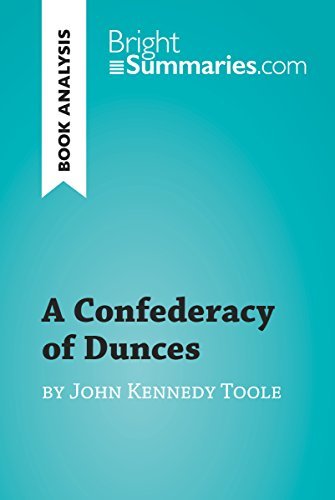
“A Confederacy of Dunces” by John Kennedy Toole is a satirical novel that explores the theme of narcissism through its portrayal of the main character, Ignatius J. Reilly.
Ignatius is a lazy and overweight 30-year-old who lives with his mother in New Orleans. He has an inflated sense of self-importance, believing that he is a genius and that the world owes him a living. He spends his days writing a never-ending book, “A Confederacy of Dunces,” in which he criticizes and belittles everyone around him.
Ignatius is a classic example of a narcissist, displaying a sense of entitlement, a lack of empathy, and a need for admiration. He sees himself as superior to those around him and believes that he is entitled to special treatment and privileges. He is completely self-absorbed and oblivious to the needs and feelings of others.
Throughout the novel, Ignatius’s narcissism causes him to clash with those around him, including his mother, his employers, and the various characters he encounters in New Orleans. His behavior is often rude, aggressive, and inappropriate, and he shows little regard for the consequences of his actions.
Despite his flaws, Ignatius is also a sympathetic character, as the novel explores the reasons behind his narcissistic behavior. It is suggested that his mother’s overbearing nature and his own insecurities have contributed to his inflated sense of self-importance.
Overall, “A Confederacy of Dunces” can be seen as a commentary on the dangers of narcissism and the negative impact it can have on individuals and society. It shows how narcissism can lead to a lack of self-awareness, empathy, and personal responsibility, and how it can ultimately lead to the downfall of those who exhibit these traits.
15. “The God of Small Things” by Arundhati Roy
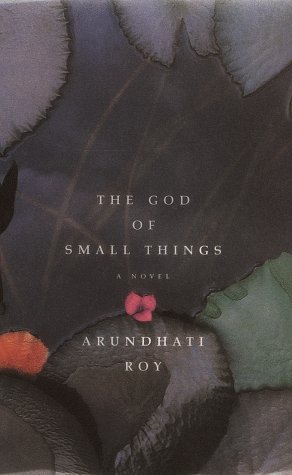
“The God of Small Things” by Arundhati Roy is a novel that explores the theme of narcissism through its portrayal of the character, Ammu.
Ammu is a single mother who is estranged from her family due to her decision to marry a man from a lower caste. She is deeply unhappy and has a tendency to retreat into herself, becoming lost in her own thoughts and emotions. Her narcissistic tendencies are shown through her constant need for attention and validation, as well as her tendency to manipulate those around her to get what she wants.
As the novel unfolds, it becomes clear that Ammu’s narcissism has a significant impact on those around her, particularly her children, Rahel and Estha. Her obsession with her own happiness and desires causes her to neglect her children, leading to a series of tragic events that ultimately result in the death of one of the twins.
The novel also explores the impact of societal norms and expectations on individuals, and how these can contribute to the development of narcissistic traits. Ammu’s decision to marry outside of her caste is seen as a rejection of these norms, but her subsequent isolation and unhappiness lead to a focus on her own needs and desires.
Overall, “The God of Small Things” can be seen as a commentary on the destructive power of narcissism and how it can impact the lives of those around us. It shows how narcissism can arise from a combination of individual and societal factors, and how it can have tragic consequences for individuals and families.
Last words
In conclusion, the 15 powerful novels about narcissism and narcissists we’ve discussed in this post offer a powerful exploration of narcissism and its impact on individuals and society. Through their complex characters, intricate plots, and compelling themes, these books offer a window into the world of self-absorption, manipulation, and tragedy that defines narcissistic personalities.
Whether you’re looking for a gripping thriller, a heart-wrenching tragedy, or a thought-provoking exploration of the human psyche, these books are sure to satisfy.
So pick up a few of these novels and see for yourself what makes the world of narcissism such a captivating and endlessly fascinating subject in literature.
